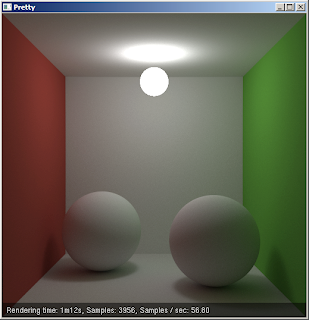I don't have proper GPU to test it on, but I got tempted by sse operations that vector operations supposedly utilize.
A performance note:
While I get 2 fps on this scene with my core 2 duo (no ht), my friend with his radeon 4870 gets almost 60 fps.
I'm not yet sure if thats good enough.

(I misleadingly called frames samples, while they are samples per pixel, yea)
.png)
.png)
.png)
.png)

.png)
.png)
.png)
.png)
.png)